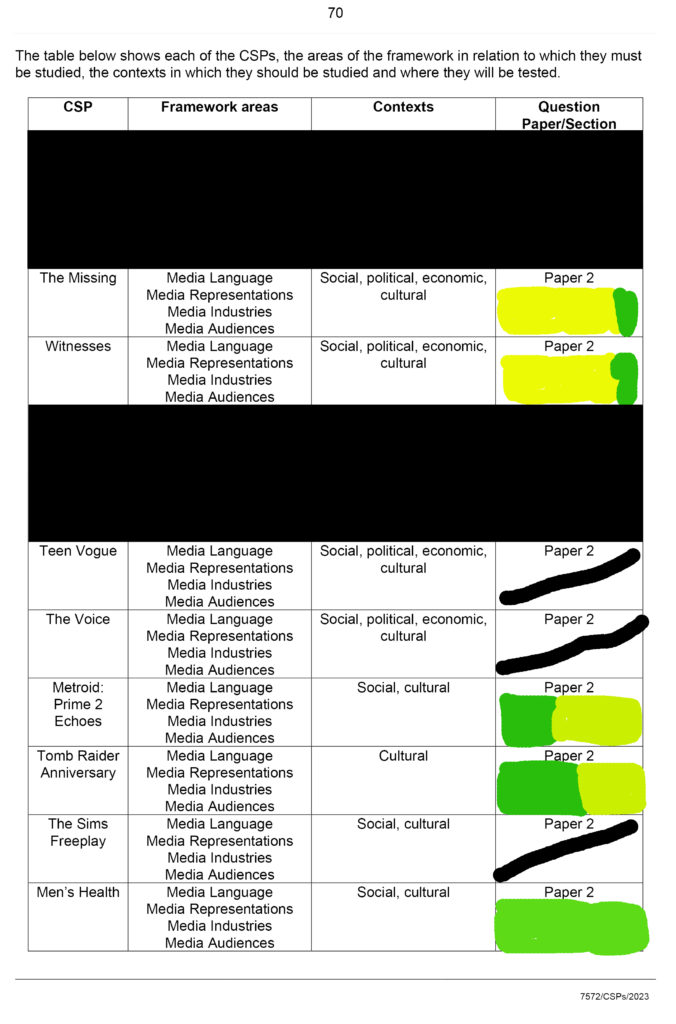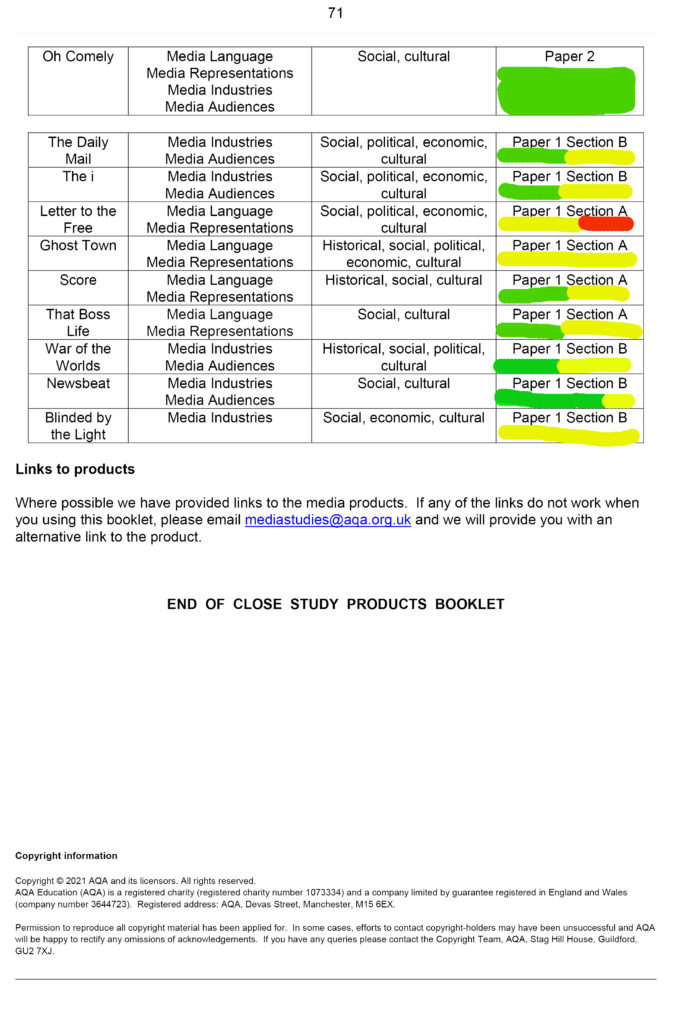

Command words
Describe – defining what you see / see specific elements / memory
Compare – the differences and similarities / compare and contrast
Evaluate – to judge or give your opinion / need evidence
Analyse – how it gives an effect and why it does this / pick out and elaborate / deeper and accurate meaning
knowledge – maintaining it in your memory of something
understanding – to explain what you know and how it does this
| What do you know about | What meaning or understandings do you have of their ideas? Put another way – how can you apply their ideas to your CSP’s? | |
| Noam Chomsky | Chomsky’s theory is based on the idea that all languages hold similar structures and rules, also known as a universal grammar (the five filters). This theory states that all languages have formal universals and principles in common, with specific options and limits for variation in grammar and features between languages. | Chomsky’s gives the impression of how the propaganda model highlights the insights into the inequality of wealth and power. |
| James Curran | Curran explains the social and political change. Curran also suggests the conflict with the political views and wider business interests where a large scale of conglomerates own new tiles have invested interest in a range of other business activities all over the globe. | Blinded by the light links in with Curran as Pakistan movies aren’t very common so therefore political views can be separated from the social view. |
| Jurgen Habermas | Habermas’ definition of a public sphere is the first and founding trigger to classification attempts of the formation of public opinions and the legitimisation of state and democracy in post-war Western societies. The public sphere is seen as a domain of social life where public opinion can be formed. Mainly it is open to all citizens and constituted in every conversation in which individuals come together to form a public. | The media is ceased to be an agency of empowerment and rationality, it manipulated mass opinion. The media isn’t always reliable so therefore seeking public opinion can create a group of individuals who aren’t afraid to go against political discussions. |
| Semiotics | Pierce Roland Barthes | |
| Representation | ||
| Audience | ||
| David Gauntlet | Gauntlet constructed a timely critique of mass media consumption models and their effects on audience thinking. The power of media narratives. Gender is socially constructed. A huge diversity of identities is portrayed. Collective identity Constructive identity Negotiated identity Fluid identity | |
| Lasswell | Lasswell’s model was developed to study the media propaganda of countries and businesses at that time. Only rich people used to have communication mediums such as televisions and radios back them. It was made to show the mass media culture. Lasswell also brought the concept of Effective Communication Process. | I understand that he is trying to show the mass media culture to get the world to get a good concept of how communication needs to be direct and listened whether you are a passive or active person. |
| Lazarfeld | The two-step flow of communication model hypothesizes that ideas flow from mass media to opinion leaders, and from them to a wider population. In the book The People’s Choice, after research into voters’ decision-making processes during the 1940 U.S. presidential election. The concept has been a subject of growing criticism, leading to a decline in the popularity and attraction of the original concept and almost to its total collapse. | I understand that he trying to explain how the two step flow of communication is influencing the public to make certain and difficult decisions from their leaders. |
| Uses and gratification | The Uses and Gratifications Theory is a Mass Communication theory that focuses on the needs, motives and gratifications of media users. The theory states that they play an active role in media consumption. Audiences consume media texts to escape from their everyday lives. They choose entertaining texts that allow them to divert their attention from the real world (1) Diversion: escape from routine or problems; emotional release; (2) Personal relationships: companionship; social utility; (3) Personal identity: self reference; reality exploration; value reinforces; and (4) Surveillance (forms of information seeking). | I understand that people use media to fulfil the user’s social needs. The idea that media audiences are active rather than passive, meaning they do not only receive information, but also unconsciously attempt to make sense of the message in their own context. |
| Stuart Hall | It is active. The media does not mirror real world events but produces an edited version of the events depicted. The media plays a vital role in shaping our views of the wider world. Stereotypes are used by media producers to create instant characterisation. Stereotypes are mostly found where there are huge social inequalities. They exclude and demonise groups in a manner that both reflects and reinforces social hierarchies. Hall provides a substantial challenge to his own ideas. His theory suggests that audiences can resist the effects of the media through the production of oppositional and negotiated readings. | I understand that stereotypes help perform as series of ideas towards the audience, manipulating them into believing that woman do stuff that men shouldn’t do whilst men do stuff that woman wouldn’t do. Stereotypes lead to moments of symbolic violence leading to groups of social power. This means that it usually links to negative features. They manipulate stereotypes to make the audience thin it is natural qualities. |
| George Gerbner | He thought that television viewing could radially change the way we perceive the real world. Cultivation theory Mainstreaming | It suggests that people who are regularly exposed to media for long periods of time are more likely to perceive the world’s social realities as they are presented by the media they consume, which in turn affects their attitudes and behaviours. He also suggests that some people are less likely to be affected by television for example people who haven’t been affected by violence. Cultivate problematic attitudes and beliefs within mainstream society where they had not existed before. |
